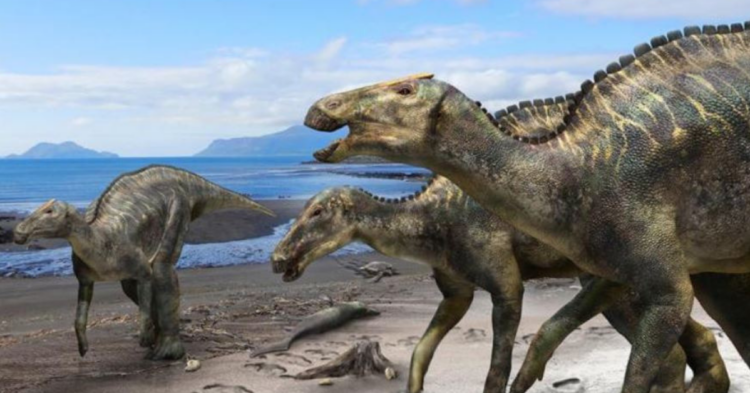Scientists in Japan have found a nearly complete skeleton of a new species of dinosaur. The discovery of the newly-named Kamuysaurus japonicus marks a big step in understanding the family tree of duck-billed dinosaurs.
Dinosaur news is good news.
I mean, it’s important to have measured expectations. We’re not talking about a real-life Jurassic Park or anything, but that said, it’s pretty cool when remains of something that lived 72 million years ago are found.
The discovery involved researchers from Hokkaido University.

While some expeditions take place in faraway places, the researchers from Hokkaido didn’t have to go very far to make this discovery. It’s the largest dinosaur that’s ever been found in Japan.
They traveled to nearby Hobetsu.

Hobetsu, Hokkaido, is a mountainous and dinosaur-rich region of Japan. They have a dinosaur museum and everything. An earlier discovery in 2013 piqued scientists’ interest, and six years later, they’ve made a major find.
Professor Yoshitsugu Kobayashi led the dig.

Kobayashi, an award-winning scientist, and his colleagues published their research recently in Scientific Reports . A press release from Hokkaido University outlines the dig, along with the significance of the findings.
Here’s where the fossil was found.

In the hills of Hobetsu, scientists unearthed the dino, which was probably an adult. It’s a sizable specimen, measuring about eight metres, or 26 feet, in length. It weighed four or five tons.
Here’s the fossil.

The name Kamuysaurus japonicus is significant. “Kamuy” means “diety” in an indigenous Japanese language, while “Japonicus” pretty clearly represents Japan. It’s a fitting name for the biggest dinosaur ever found in the country.
They had to make sense of a bunch of fossils.

While part of the tail was found back in 2013, it took further excavations to find the rest of the bones.
It had some interesting characteristics.

Scientists say certain characteristics of the bones — particularly notches in the cranium — show that this dinosaur is different from other duck-billed dinosaurs that have been discovered previously.
It could have walked on two or four legs.

The dinosaur has big, muscular rear legs and front legs that almost resemble those of a t-rex. It isn’t known for sure how it walked, but it would have made a difference in the creature’s weight.
It’s part of a larger family.

Other duck-billed dinosaurs like Parasaurolophus cyrtocristatus have already been classified and can be seen at lots of museums. It’s probably only a matter of time before the newly-discovered dinosaur joins them.
Here’s another relative.

This replica skeleton of an Edmontosaurus annectens , on display at the University of Oxford Museum, gives us a good look at the kind of family lineage that Kamuysaurus japonicus came from.
It’s a cool find.

It’s hard to overstate how important this discovery is for dinosaur buffs in Japan. Let us know what you think of this discovery in the comments section!
h/t: Hokkaido University .

















































